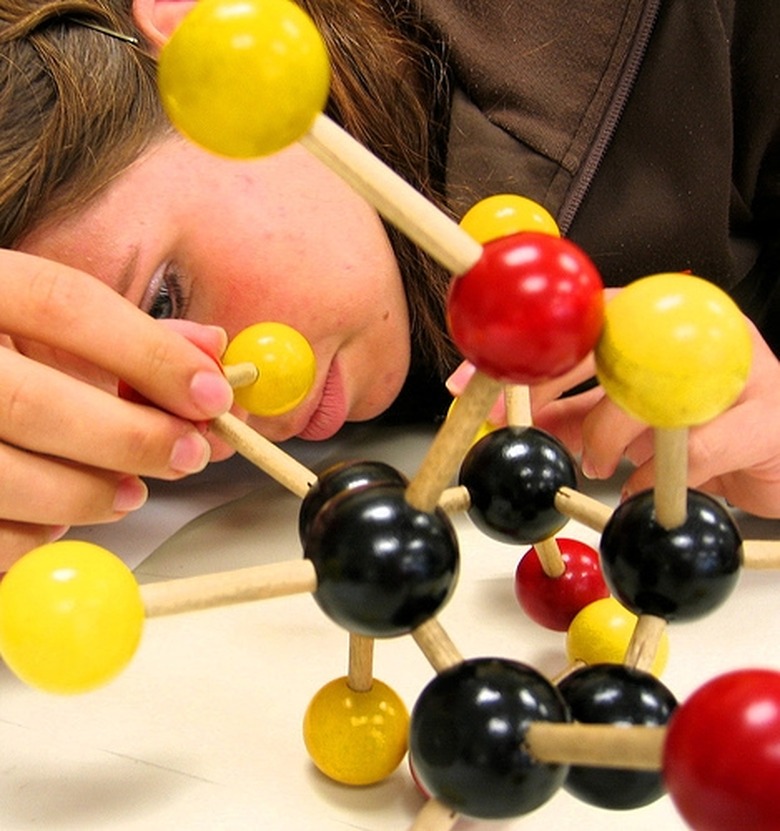Atomic Structure Of Gold
Gold was the first metal widely known to humans, as it exists in its natural state and could be found as yellow nuggets in riverbeds. Egyptians began mining gold in 2,000 B.C.E. For centuries, alchemists tried to turn other metals, like lead or copper, into gold. If alchemists understood the chemical reactivity and the gold atomic structure, they would have understood their efforts were futile.
Chemical Properties of Gold
Chemical Properties of Gold
Gold is a transition metal in group 11, period 6 on the periodic table. Its name is from the Old English word, geolo (yellow), but its symbol, Au, is from the Latin word for gold, aurum.
Despite the many efforts of alchemists, their experiments failed. Gold is relatively unreactive. It will dissolve in a mixture of nitric and hydrochloric acid, a solution known as aqua regia. (Historical note: Several Nobel prize-winning scientists dissolved their medals in aqua regia to avoid confiscation under the Nazi regime).
Understanding Atomic Structure: Basics
Understanding Atomic Structure:
Basics
To understand the gold atomic structure, a general understanding of atomic structure is needed. In the early 20th century, Danish scientist Niels Bohr proposed a simple model for the structure of atoms that will be suitable to visualize the gold atomic structure. (Historical note: Niels Bohr hid the dissolved gold Nobel metals in his laboratory during World War II.)
In general terms, a nucleus is the positively charged center of an atom containing protons and neutrons. The protons and neutrons are collectively called nucleons. The third main subatomic particle of an atom, electrons, is located outside of the nucleus.
Understanding Atomic Structure: Protons and Neutrons
Understanding Atomic Structure: Protons and Neutrons
A proton is a subatomic particle with a mass of 1.67 x 10-24 grams, defined as 1 atomic mass unit, and has a positive charge, +1. It is the number of protons in the nucleus that defines the element; for example, an element with two protons will be helium. As the number of protons change in the nucleus, the element identity changes.
A neutron is a subatomic particle with a mass 1.67 x 10-24 grams, defined as 1 atomic mass unit, and has a neutral charge. As the number of neutrons change within the nucleus, the identity of the element remains the same. A change in the number of neutrons in the nucleus denotes an isotope of the same element.
Understanding Atomic Structure: Electrons
Understanding Atomic Structure:
Electrons
Electrons are outside the nucleus and have a negative charge, –1. Their mass is so small it is considered negligible.
Niels Bohr proposed that electrons travel around the outside of the nucleus in paths called orbits. Bohr postulated that these orbitals are not random, and these determined levels denote how far from the nucleus electrons are found.
Gold Atomic Structure: Nucleus
Gold Atomic Structure: Nucleus
With a basic understanding of atomic structure, the gold atom may be visualized.
Recall that the number of protons determines the element's identity. Gold has 79 protons in its nucleus. On a periodic table, the atomic number, usually the number located above the symbol for that element, corresponds to the number of protons for that element.
To find the number of neutrons present, locate the atomic mass of that element (usually located below the symbol). Gold has a mass of 197 atomic mass units. Subtract the number of protons from the atomic mass. For gold, 197 – 79 = 118. Gold has 118 neutrons.
Gold's nucleus, then, contains 79 protons and 118 neutrons. The additional neutrons reduce the repulsion between the positively charged protons. The nuclear forces bind the nucleus together.
Gold Atomic Structure: Electrons
Gold Atomic Structure: Electrons
Gold also has 79 negatively-charged electrons; these will balance the 79 positively-charged protons. These electrons will exist in determined orbitals around the nucleus. Each orbital can hold a certain amount of electrons.
Gold, in period 6 on the periodic table, has six energy levels. The 79 electrons will fill the orbitals in these energy levels according to the amount each orbital can hold. From the first to the sixth energy level, the number of electrons that fit in each energy level may be calculated using 2n2, where n is the energy level.
Using 2n2 the first energy level, n = 1, is 2(1)2; or, it can hold 2 electrons. The first six energy levels can hold, 2, 8, 18, 32, 50 and 72 electrons, respectively. Gold, being an anomaly to electron filling, will fill levels from lowest to highest energy level, and the numbers of electrons are 2, 8, 18, 32, 18 and 1. A diagram may be created with six concentric circles around a nucleus, and the above number of electrons in each ring.
Cite This Article
MLA
Kozlowski, Rosann. "Atomic Structure Of Gold" sciencing.com, https://www.sciencing.com/atomic-structure-gold-5476075/. 26 March 2020.
APA
Kozlowski, Rosann. (2020, March 26). Atomic Structure Of Gold. sciencing.com. Retrieved from https://www.sciencing.com/atomic-structure-gold-5476075/
Chicago
Kozlowski, Rosann. Atomic Structure Of Gold last modified August 30, 2022. https://www.sciencing.com/atomic-structure-gold-5476075/
